About 6:07 local time (04:07 UT) of last July 17th, SMART Project detectors registered a fireball that flew over Andalucía (South Spain). The analysis carried out by Professor José María Madiedo (University of Huelva), SMART Project PI, points that this fireball started due to the impact of a cometary meteoroid against our atmosphere. The fireball started over Jaén province at an altitude of about 120 km. The luminous phenomena finished at an altitude of about 75 km above the ground. This event could be recorded from SMART project detectors at Calar Alto, La Hita, Sierra Nevada and Sevilla Observatories. It was also recorded with Calar Alto Observatory west surveillance camera.
The image on the top left, captured with one of the SMART cameras at Calar Alto Observatory, shows the emission spectrum of this object.
Below are the videos recorded with both Calar Alto Observatory SMART detectors and surveillance webcams.
The videos below show other objects that could be recorded during July 2017, but from which, unfortunately, we couldn’t gather any other information.
First video shows the fireball that could be recorded with Calar Alto Observatory south webcam last July 4th. The telescope that can be seen on the bottom left of the video is the 3.5m telescope. The big light on the right is the moon.
Next video shows the first of the two fireballs that could be seen last July 11th. This one was recorded with the same camera as the previous one.
The same night, another fast fireball could be recorded with the Calar Alto Observatory north webcam. In this video you first can see the fireball at the real speed and then you can see it also at a lower speed.
Calar Alto (CAHA) fireball detection station, together with the one at the Observatory of Sierra Nevada (IAA-CSIC) and others placed at different locations in Spain, are part of the S.M.A.R.T. project led by Professor José María Madiedo (University of Huelva) to track that kind of objects. Specifically, Calar Alto (CAHA) station and the one at Sierra Nevada (IAA-CSIC) constitute a collaboration agreement between Professor Madiedo and both institutions.

 English (UK)
English (UK)
